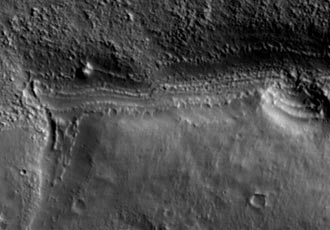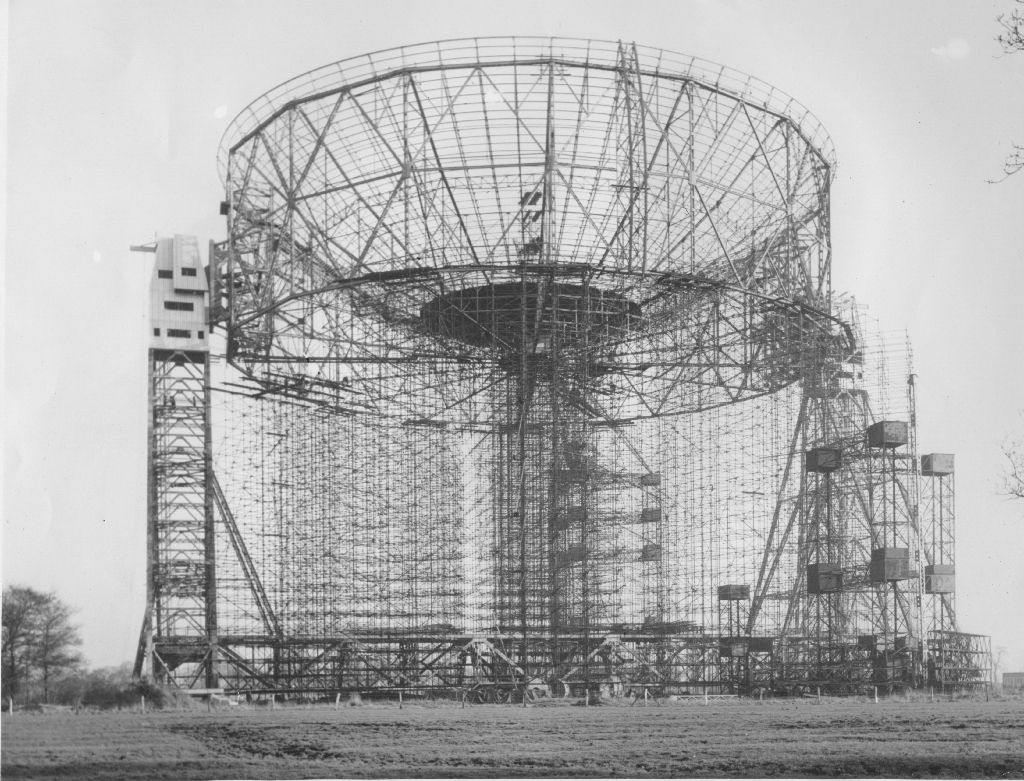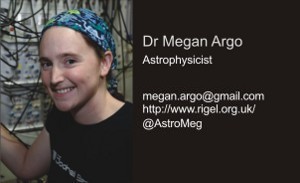Go to the archives
Who needs sleep? (Tell me, what's that for?)
I'm off to visit a school in about an hour to do day three of my Researcher in Residence placement. It's fun, but it does mean that I don't get a lot of sleep the night before. Today, like last time I went, I'll be giving three one-hour talks to sixth formers, telling them about radio astronomy and some of the research I do. Talks to any group of any size are quite scary, but this is making me quite nervous. I'm sure it will be fine, but somehow that never helps, the pterodactyls are still there ripping my insides to pieces.
Still, this time I haven't minded the lack of sleep too much as I'm currently using the VLA to observe M82 again! The observation started just before midnight (GMT) last night and wil finish in about an hour. It's the final segment of a five-part observation so I'll download the data later in the week and see whether it all worked or not. Fingers crossed, as I wrote the schedule telling the telescopes where to point!
(The post title? Lyrics from a BNL track.)
Posted by Megan on Tuesday 28th Mar 2006 (
06:10 UTC) |
Add a comment |
Permalink
First pictures from Mars Reconnaissance Orbiter

Part of the first high resolution image from MRO
CREDIT: NASA/JPL-Caltech/University of Arizona
The first images are back from NASA's latest mission to Mars. The picture on the left shows just a small part of a much larger image taken at full resolution with the High Resolution Imaging Science Experiment camera on board
Mars Reconnaissance Orbiter (MRO) which is currently aerobraking into Mars orbit.
This image was taken today at
8:36 p.m. PST during tests of all the cameras on board. It was taken from a height of about 2,489 kilometers (1,547 miles) above the surface of the planet, and the resolution is about 2.5 metres per pixel. The full press release (with more images) can be found on the
MRO website.
What is incredible is that this is still about nine times the height planned for the orbiter's primary science mission which is planned to start later this year. Imagine what full resolution images from the final orbit are going to look like... I can't wait.
Posted by Megan on Friday 24th Mar 2006 (
21:05 UTC) |
1 Comment |
Permalink
PPARC to be abolished!
Well, not quite, but that's what the rumour was this morning. The Chancellor's budget speech today apparently mentioned this but, after some digging, it seems that the suggestion has been made to merge the CCLRC (Central Laboratory of the Research Councils who run places like the Rutherford Appleton and Daresbury labs, and Chilbolton Observatory) and PPARC (Partile Physics and Astronomy Research Council who fund UK observatories, including MERLIN, our suscription to ESO, and a large proportion of astronomy research in the UK) to create a Large Facilities Research Council. Read the relevant report on the Treasury's website.
Posted by Megan on Thursday 23rd Mar 2006 (
13:43 UTC) |
Add a comment |
Permalink
Strange goings on in the sky

Mystery lights in Cheshire
CREDIT: Megan
No, not UFOs, but ULSs (Unidentified Light Sources). The image on the left shows a light which appeared on the horizon this week. I first noticed it coming back from a meeting at about half past ten last night but it had gone by the time I eventually left the office (which was very late, admittedly, or early depending how you look at these things). It was there again when I left at about half past eight this evening so, after having some dinner, I decided to go and hunt for it. When I spotted it yesterday I thought it might be something to do with the railway, the workmen often have bright lights shining way above the horizontal when they are working on the line at night, but this is quite a way to the west of the line so it's not them.
It actually turned out to be further away than it looks. The trouble with this part of the country is that it is very flat so there isn't anywhere to go to get a good view of the surroundings. In the end I cycled to a village which my map says is about five km away. It still looked quite a distance away and the batteries in my front light were running down (bizarrely, it has it's own low battery light) so I took a bearing and some photos before heading back.
No one I've spoken to seems to know what it is. Some of the other students spotted it yesterday and thought it might be the airport, but I'm not so sure. The streak to the right of the light in the image is a plane by the way, but I'm sure you'd guessed that already.
So, any guesses?
Posted by Megan on Thursday 23rd Mar 2006 (
00:55 UTC) |
Add a comment |
Permalink
World Water Day
Today is World Water Day. One article on the BBC News pages today was about how people in remote villages in Tanzania are using very simple methods to sterilise their water supplies. People in the West often do this through the use of chemicals which are expensive, bad for the environment, and not easy to get hold of in the middle of the African bush. One method you may have used if you have ever been camping somewhere off the beaten track is boiling. Put a pan of water over a high heat and let it boil for a while, killing off any nasty bugs which may be in it. What they have been doing in Ndolela village is using sunlight to do the same job.
They bottle the water they get from either the intermittent piped supply or the local well and leave it in the sunlight on a roof which has been painted black. The light from the Sun heats up the water to a moderate temperature and the roof absorbs sunlight and re-radiates a significant fraction as heat which adds to the overall heating. The prolonged heat combined with the exposure to ultra-violet rays over the day kills off anything nasty living in the water. This simple method of purification has made life easier for the people in remote villages like this and helped reduce illness due to stomach complaints often caused by bad water.
OK, so it's not really astronomy, but it's still science.
Posted by Megan on Wednesday 22nd Mar 2006 (
19:11 UTC) |
Add a comment |
Permalink
Archive update
Yesterday I was supposed to go to Birmingham to a Girl Guide challenge day at Thinktank. One of the disadvantages of living out here is having to rely on taxis to get places every now and then. After getting up at 6am (and having been up till 1am the previous night) I was rather annoyed when the taxi didn't show up. Rather than waste the day, I headed over to the office and spent the day working on the archive. There is a stack of video reels in there, most of which look in pretty good condition. We don't have the equipment to play them so all I've done is look at the tape heads and any labels that there might be. Some of them appear to be of the construction of the Mk 1 which is really exciting. These will all go up to the University to be digitised at some point. I can't wait!
I also scanned the Blue Book. It took a while as it had to be done quite carefully, it is over 50 years old after all. There is now a section of the Jodrell archive where you can view the entire thing.
Posted by Megan on Sunday 19th Mar 2006 (
21:26 UTC) |
Add a comment |
Permalink
Spitzer spies a starburst

Spitzers view of M82
CREDIT: NASA/JPL-Caltech/University of Arizona
This picture is a new view of M82, the galaxy I spend most of my time studying. M82 is a nearby galaxy which has had a recent encouter with its neighbour M81. The interaction caused all sorts of gravitational instabilities in the large gas clouds in the centre. These instabilities caused the clouds to start to collapse, getting denser and hotter as they did so. Eventually the conditions in the centres of these collapsing clouds became so extreme that nuclear fusion could begin and, voila! A star is born.
We know how much "stuff" (mainly hydrogen gas) is needed to make a star, and we know how much of it is in these galaxies because we can measure it using radio telescopes. Because the interaction causes the collapse of large amounts of gas, it also causes large amounts of star formation. We can measure how fast stars are being born by several methods, including the rate at which they die - the more supernovae explosions we see, the more stars had to have formed in the first place. Once we know these numbers we can use them to estimate how long the star formation could last with the amount of gas that is available. It turns out that the star formation rate in galactic mergers and interactions is so high that if the rate had been the same since the galaxy formed it would have long ago run out of gas and the star formation would have stopped. This is why they are called starbursts, the period of vigorous star formation happens over a timescale much shorter than the lifetime of the galaxy as a whole.
The starburst activity results in winds of material streaming out of the disk of the galaxy, powered by powerful supernova explosions. Some of this is gas, but a lot of it is dust particles (like the smoke from a campfire) and it is the dust that Spitzer has detected in this image. The dust itself is warm, having absorbed photons from the stars in the plane of the galaxy (the blue regions in this image) it heats up and re-radiates some of the energy as lower energy infra-red photons (the red stuff). The clouds seen here stretch out a massive 20,000 light years from the disk in both directions, that's pretty big. We already new this wind existed, but this is by far the best image of it yet. Well done Spitzer!
Thanks to Ant who spotted it first!
Posted by Megan on Friday 17th Mar 2006 (
08:53 UTC) |
Add a comment |
Permalink
WMAP results at last!
After a long wait and much speculation, the WMAP team are today about to release several years worth of data. This should be very interesting and provide lots of information for the theorists who work on cosmology and the structure of the Universe. As well as all the scientific data, there are bound to be some pretty pictures to go with this, so keep your eyes on their website. I'll write more on this when I get the chance (having my own data nightmares at the moment), but I'm sure Andrew Jaffe will beat me to it (he is a cosmologist, after all!).
Posted by Megan on Thursday 16th Mar 2006 (
16:58 UTC) |
Add a comment |
Permalink
More Stardust news
A NASA press release on Stardust just sent out says that scientists working on the samples have found particles which were formed at high temeperatures, which could challenge theories of comet formation. From the press release:
"The interesting thing is we are finding these high-temperature
minerals in materials from the coldest place in the solar system," said
Donald Brownlee, Stardust principal investigator from the University of
Washington, Seattle.
They were expecting to find mainly volatile species, stuff that exists only at low temperatures as that is the environment in which the comets formed, but these findings suggest that, in its early days, the Sun was throwing non-volatile compounds right out to the edges of the solar system. They also found bits of a compound known as olivine, something that is very common on the surface of the Moon. It all sounds really exciting, can't wait to see what they find next!
Posted by Megan on Monday 13th Mar 2006 (
22:57 UTC) |
Add a comment |
Permalink
National Science Week (and creationism?)
This week is National Science Week here in the UK. There doesn't seem to be a lot happening in my corner of the country, but today I did my bit. During last year's Science Week I attended the opening of the Earth sculpture which is part of the Spaced Out project, the world's largest scale model of the solar system. After the ceremony I got talking to a physics teacher at the school where the sculpture is located and offered to show them round if they wanted to bring some students out to the Observatory (as you do). Recently I had an email from this teacher asking if I could give a talk to some primary school children at his school during Science Week this year. So, me being me, I said yes.
It was actually quite scary as I've never really talked to primary school children without the use of the planetarium, I wasn't sure just how much detail I could go into before I lost them completely. An hour can seem like a very long time when you're trying to keep the attention of a room full of restless children. In the end it was three talks of an hour each, and it seemed to go really well. I basically gave them a tour of the Universe, starting from a satellite picture of the town and zooming all the way out to the Hubble Deep Field via the planets, other solar systems, the Milky Way and other galaxies, including a little demo of the scale of the solar system using a model of the Earth-Moon system which goes down well at Ask an Astronomer. We ended with the collision of Andromeda with the Milky Way, the Sun becoming a Red Giant and what might ultimately happen to the Universe. Now I think about it, that seems a lot to get through in an hour!
The first two groups were really well behaved. They had lots of really good questions and some of them knew an incredible amount already, but they were great. They always put up their hands before asking a question, and they had lots of them. Groups like that are a real pleasure to talk to (even though I still get pterodactyls, don't think I'll ever get over that). The last group were quite a contrast. They talked pretty much constantly, and several of them just made silly comments all the way through. Grrr. As I'm only just getting back to normal after the evil chest infection of the other week, I wasn't going to talk over them, so I just kept stopping. I figured if they didn't want to listen, I didn't want to waste my breath talking. Hey ho.
On the way back to the office I was talking to this teacher about school science and he told me something that I find very worrying. After all the controversy in America over the teaching of creationism in science lessons, it has apparently now made it into the new national curriculum for science here. Now, I'm all for encouraging students to debate issues like this, it's both an important issue and an essential skill to be able to investigate an issue and reach your own conclusion based on the evidence, but this one really belongs in religious studies, not in the science classroom. Had I not already been sitting down, I would have needed to.
After some digging, it seems that OCR are behind this. The new structure to their science GCSE course is called "Gateway Science" and seems to be encouraging the teaching of how the science process actually works, rather than just teaching facts (something I've been ranting about for a while, so this sounds like a good thing). The only reference I have found to creationism is on page 69 of this document which says:
Explain that the fossil record has been interpreted differently over time (e.g. creationist interpretation).
I'm not sure quite what to make of this. Different ideas should be mentioned in order to show that scientific theories evolve with new data, but should creationism really be used in this context?
Posted by Megan on Monday 13th Mar 2006 (
22:41 UTC) |
Add a comment |
Permalink
The archive
This week, a start has been made digitising the archive material found in the cupboard along with the blue book a couple of weeks ago. Ian, one of the telescope controllers, has been helping me with this as he knows quite a bit about the history of the telescope and the Observatory in general. In two days he scanned enough images to fill eight CDs with data! He's going to transfer it all to a DVD to go with the catalogue I've started.
Eventually (in time for the 50th anniversary in 2007), a lot of this material will all be available online in the Jodrell Bank archive, but there isn't much there yet, I just put up a quick intro page today which links to other interesting pages on the Jodrell website. There are two photos though:


Construction of the Mk 1 telescope at Jodrell Bank in the 1950s.
Left: view of the telescope with most of the major steelwork completed. Large amounts of scaffolding can still be seen under the bowl and a crane is behind the tower on the right of the image. At this point the fixing of the surface panels has begun, but still has a long way to go.
Right: the view from one of the towers during the assembly of the backing structure for the bowl. Here you can see the central hub at the base of the bowl and some of the ribs which will eventually support the membrane from underneath.
CREDIT: University of Manchester
There will be plenty more over the next few months as the contents of the cupboard are properly catalogued. Tomorrow I am going to rescue some more archive material which has been sat in the old darkroom in one of the engineering buildings for several years. (I get the feeling that this is going to be a never ending job...) The telescope logbooks from the control room (which go as far back as October 1958) are all in one of the huts on site, but a squirrel has been getting in to the building and ripping up bits of paper. Although it can't all be protected as there isn't enough secure storage space for everything, the logbooks have now been moved into an old metal cupboard which will hopefully provide some protection against rampaging wildlife. Unfortunately it doesn't help with the damp though.
Yesterday I ended up showing Sir Bernard what I'd found. A man from
The Engineer magazine visited the Observatory to interview Sir Bernard about his telescope and was talking to the controllers while waiting for his taxi to arrive. I popped in the control room on my way past and ended up getting out a stack of photos for them to look at. The man from The Engineer mentioned an article that had been published in their magazine back in 1957, just before the telescope was used for the first time, and today he very kindly sent a copy up. It is fascinating reading, as all this stuff is.
Posted by Megan on Friday 10th Mar 2006 (
23:45 UTC) |
Add a comment |
Permalink
Is there something up with gravity?
Thanks to my pathetic excuse for an immune system I'm off with a chest infection again. At least being an astronomer, the lack of sleep for the last few days doesn't really bother me :-) Yesterday afternoon I was bored so I went for a bit of a wander round the arboretum. There is a scale model of the solar system in there with a display board for each planet stretching from Mercury on the edge of the car park out to Pluto in the far corner of the grounds. As I was walking towards the car park I discovered that Jupiter had moved! Instead of being where it usually is, it had migrated to the sundial which is near the location of Saturn, very strange. When I told the visitor centre staff that there must be something seriously wrong with gravity because Jupiter was moving away from the Sun, they thought I was being serious! Oooops!
Posted by Megan on Wednesday 01st Mar 2006 (
13:32 UTC) |
Add a comment |
Permalink
Powered by Marzipan!
Last updated: Sunday, 22-Jun-2014 23:32:13 BST












